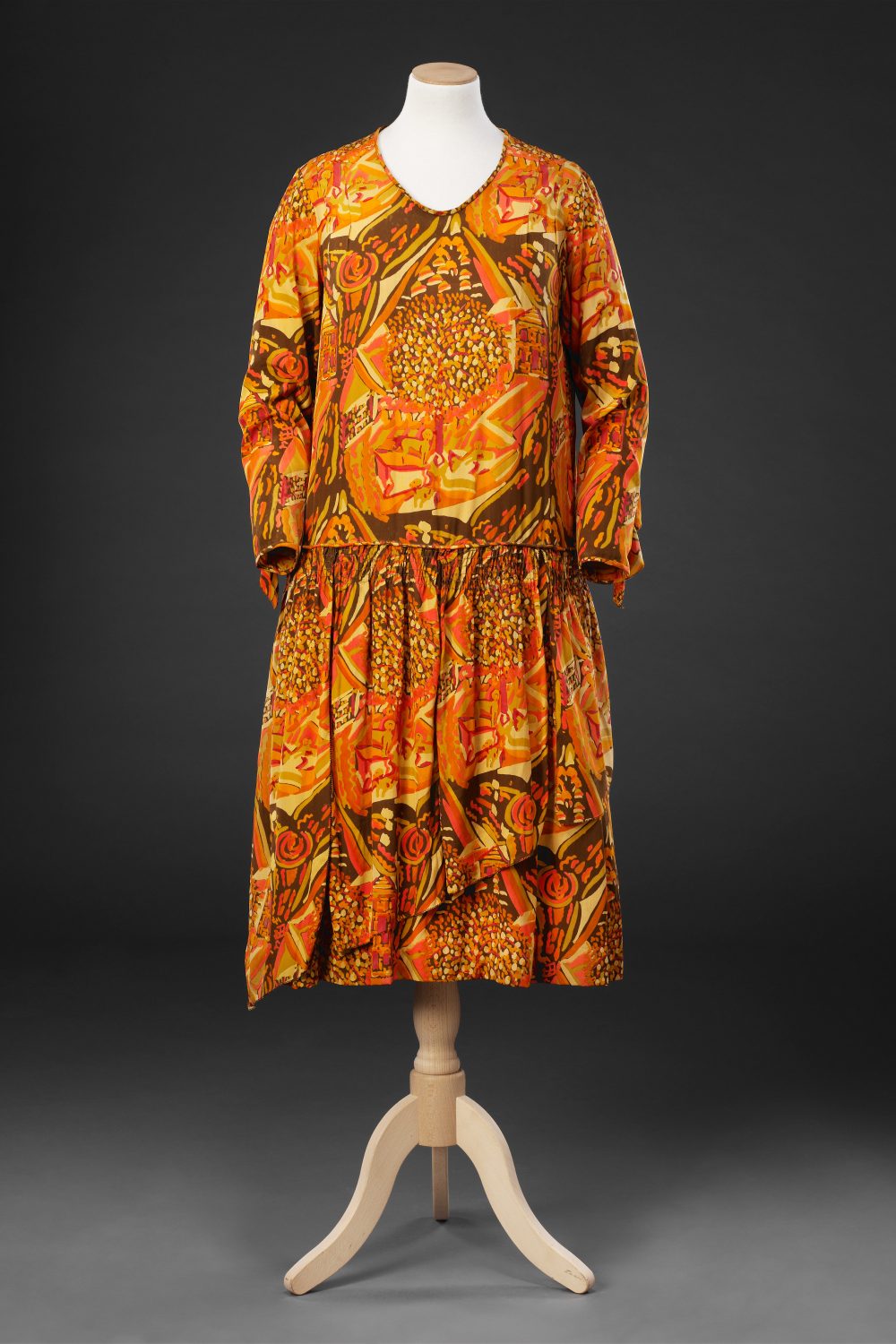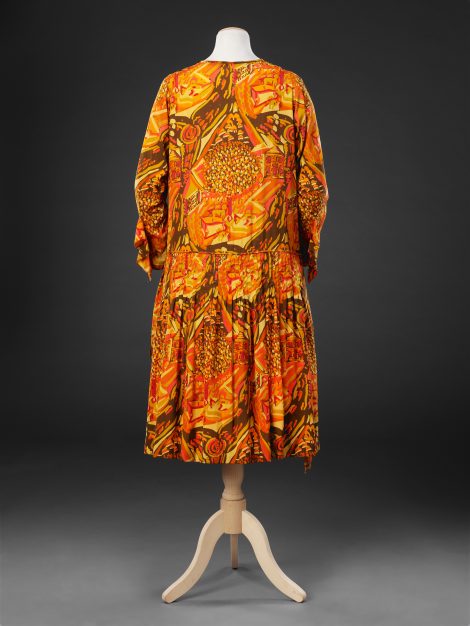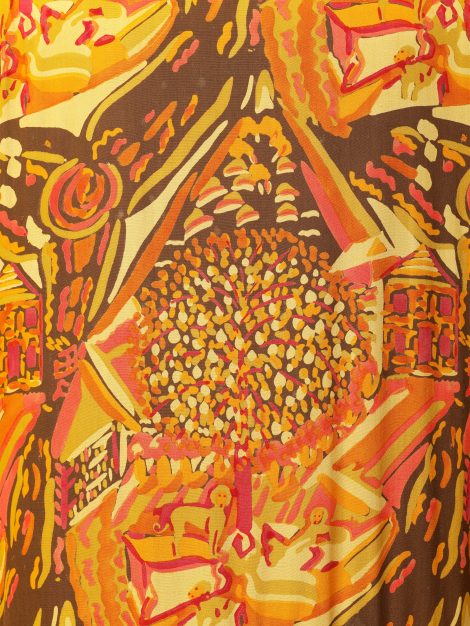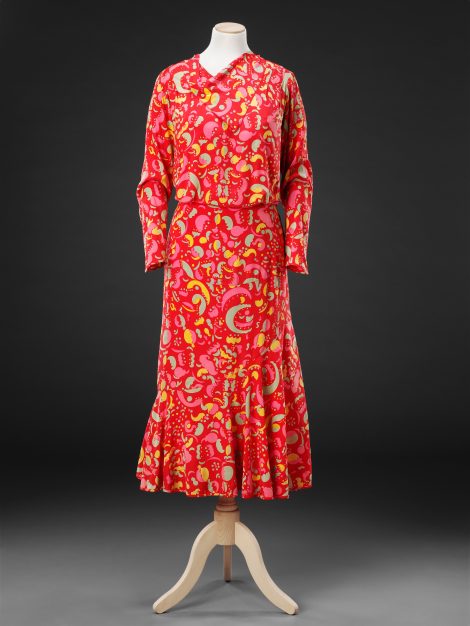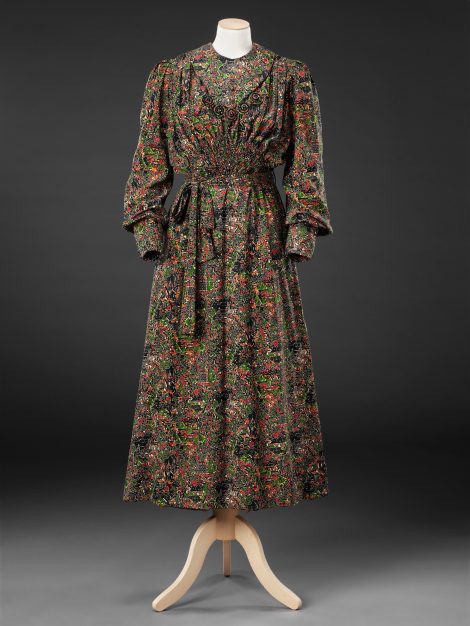Acquired from Josie Grant
The Crysède textile company, founded by Alec Walker in 1920, produced block-printed fabrics from its headquarters in Cornwall, first in Newlyn then, from 1925, at St. Ives. The John Bright Collection owns a number of garments made up in these fabrics.
Walker trained in all aspects of silk production at his family’s business in Yorkshire, inheriting his own silk mill at an early age. His strong interest in the arts brought him into contact with the artists’ colony at Newlyn and the Vorticists in London, encouraging him to combine his own creative talent with his knowledge of textile technology to establish the Crysède company. Wanting to ‘carry modern feeling, as expressed in modern design, into the fabrics themselves’ as he put it in an interview for the St. Ives Times, he visited Paris for inspiration in 1923, where the artist and textile designer Raoul Dufy suggested he use his own landscape paintings as the basis for his designs. The printed fabrics were available to purchase by the yard or as garments made up on site either in Crysède’s own shops (three of which were designed in a sleek modernist style by the young architect Wells Coates) or by mail order. In common with the Footprints and Cresta textile printing companies also represented on this website, great importance was placed on the training and well-being of the staff.
The earliest Crysède garment in our collection is this silk dress dating from the late 1920s, made from ‘Hound and Tree’, a design illustrated in Studio magazine in 1928, and probably more or less contemporary with the dress. Based on one of Alec Walker’s own paintings that he rearranged into a repeat pattern, its central motif is a large tree, beneath which several dogs stand or lie, in the grounds of a nearby house. The strong, non-naturalistic colours, the lack of scale and perspective, and the manner in which representation is subsumed into a rhythmic design, are evidence of the influence of such artists as the Post Impressionists, the Fauves and the Nabis, whose work Walker would have been aware of on his visit to Paris. ‘Hound and Tree’ was printed in at least three surviving colourways, each giving a very different appearance to the design. The dress is surprisingly fussy in construction for such a strong print, with four hanging panels, graded in length across the front of the skirt, a series of inverted tucks across the back, and a flounce down the lower part of each sleeve.
